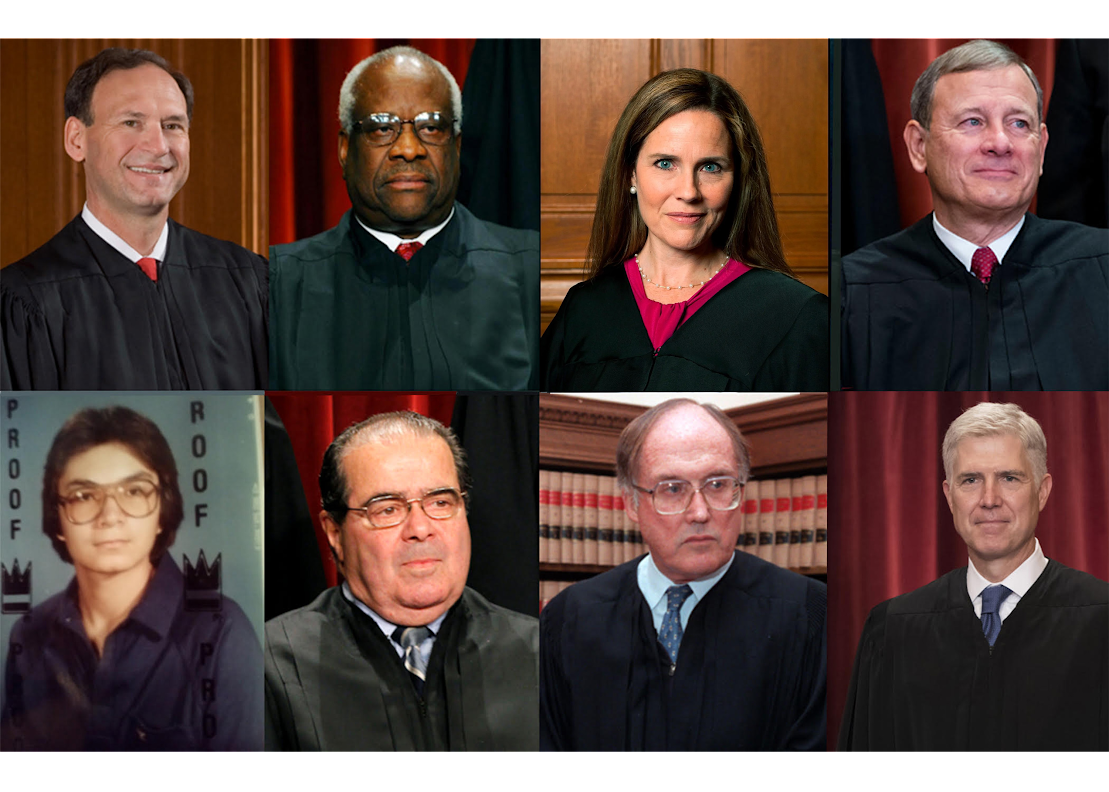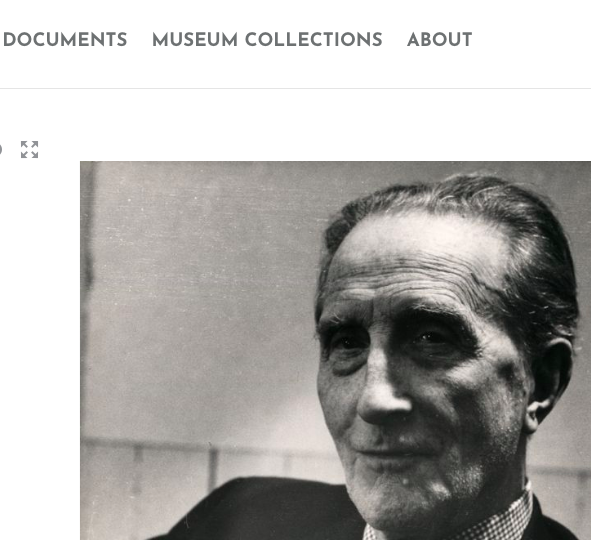A former payroll manager at the Brooklyn Museum pleaded guilty this week to embezzling $620,000 by cutting paychecks to phony staff. Dwight Newton admitted committing wire fraud by creating phantom workers and wiring money directly into the joint bank account that he shared with his wife. “I transferred money that was not entitled to me,” Newton told the judge. More from the New York Post here.
Will textualism save our copyright planet? Warhol Fdn v. Lynn Goldsmith headed to SCOTUS
Images of Goldsmith and Warhol at issue. The U.S. Supreme Court will review a ruling that an Andy Warhol print infringed a copyrighted photograph taken by photographer, Lynn Goldsmith, of the late musician, Prince. We certainly hope--as much as one can hope for anything these days--that SCOTUS cleans up the wasteland that has become of "fair use" interpretation. One would think, and hope I suppose, that with many of the sitting justices adhering to textualism, they will fully jettison the nonsensical "transformativeness" test that has plagued us like a really bad case of Covid since the mid-1990s. Docs here, via ...


Podcast: Stephanie Drawdy and Sergio Munoz Sarmiento on All Things Art and Law
Ahh...Youth! Sergio Munoz Sarmiento. (2015 - ongoing), C-Print. © and TM Sergio Muñoz Sarmiento. All rights reserved. I had a lovely conversation with fellow lawyer and artist, Stephanie Drawdy, on the NFT craze, pets, art law, and the origins of The Art & Law Program. You can listen to the Podcast here. Hope you enjoy!


Marcel Duchamp archives now online, free of charge
The Philadelphia Museum of Art, the Centre Pompidou, and the Association Marcel Duchamp have digitized their vast archives of material on the Dadaist and placed it online, where it is free to all. Enjoy!


The Art & Law Coloring Book
If you have kids at home and want them to do something fun and educational, try the Art & Law Coloring Book, an ongoing project by The Art & Law Program. Really a great collection of drawings by great artists, including: Emma Jane Bloomfield Damien Davis Molly Dilworth João Enxuto Soda Jerk Clare Kambhu Alexandra Lerman Erica Love Douglas Melini Sergio Muñoz Sarmiento Melinda Shades Elisabeth Smolarz Gabriel Sosa Alfred Steiner Valerie Suter Happy coloring!


What are NFTs and what does it mean to own one?
If you're confused as to what the hell NFTs are, particularly art NFTs, here's a new article by Alfred Steiner that pretty much walks you through and safely out of the NFT hell. In his article, Steiner explains what NFTs are and what it means to own one. He also discusses why that meaning of ownership—which may appear novel to many—isn’t new at all when considered against the backdrop of the market for conceptual art. Steiner concludes with some observations about how NFTs may be good and bad for the art industry.



But more importantly who will win the BCS title? And a quick note and correction out there, the game between the Texas Longhorns and the Alabama Crimson Tide will be on January 7th, at 8pm EST, not January 8. I strongly believe the Longhorns will surprise again as they did in 2005 against USC. Any takers?
Now the legal part. The artist who made paintings inspired by the Alabama Crimson Tide football team was sued by the University of Alabama for trademark infringement. The Tide lost. Now the artist, Daniel Moore, objects to a “part of a judge’s order that says he can’t reproduce his artwork for things such as calendars.” It seems pretty clear cut. If Moore owns the copyrights to his own paintings, and they don’t include any Tide logo or trademarks, then it seems to me he’s in the clear. We’ll see.
Via Donn Zaretsky.
No kidding. Artist Juan Carlos Macias alleges that an art supplies store sold him defective art supplies, including a professional-grade gloss, which caused at least 12 of his paintings and artworks to deteriorate, fade and deform.
“The way it is being portrayed is inaccurate and inappropriate,” said general manager Jim Gay. “The thing I find particularly annoying is that it is being portrayed as though we knowingly sold defective merchandise, and of course there is no evidence that there was defective merchandise.”
Thanks to TopArtNews (via Twitter) for spotting this story. More from the Chicago Tribune here.
A bit of shameless self-promotion. Lane Relyea, Associate Professor of Art Theory & Practice at Northwestern University, asked me to participate on his panel, Futures of Criticism, at the 2010 CAA Conference in Chicago. I am extremely honored to have been asked to participate on this panel concerning art criticism with other distinguished presenters (see below for more info). Please let me know if you’ll be attending. I look forward to seeing you.
Here’s an abstract on what I’ll be speaking about at the Conference.
Who Needs an Art Critic: Law and the Space of Writing
Art critics currently employ an incestuous language (anti-capitalist, leftist, politically correct) which has become not only irrelevant to cultural analysis, but also deleterious to the relevance of art and art criticism.
Artists and art critics have always looked outside their disciplines for “alternative” ideologies and discourses to inform – and mirror – their own productions. Sadly, these discourses have become stale, predictable and impotent. In a glaring example of adherence to a tired dialogue, classic leftists and art critics alike profess to abhor law and its structures, yet hypocritically embrace those structures when politically and culturally convenient.
This paper will cover three topics: law as its own artistic space; how textualist legal writings and interpretations can breathe life into a dying art criticism; and how the impact of law on cultural production and reception provides a fresh and relevant mode of art criticism.
Futures of Criticism
Thursday, February 11, 9:30 AM–12:00 PM
Grand B, Gold Level, East Tower, Hyatt Regency Chicago
Chair: Lane Relyea, Northwestern University
Criticality, Critique, Critical Practice
Gail Day, University of Leeds
The Critique of the Incitement to Discourse and the Basic Problems of Phenomenology: Two or Three Critical Models in/around Tino Sehgal
David Lewis, Graduate Center, City University of New York
Who Needs an Art Critic: Law and the Space of Writing
Sergio Muñoz Sarmiento, Clancco: Art and Law
Historicizing Contemporary Art: The Living, the Dead, and the Undead
Simone Osthoff, Pennsylvania State University
Criticisms, Publics, Communities
Frazer Ward, Smith College
Well, yes, but that doesn’t mean there aren’t legal consequences. From today’s Guardian:
Does breaking a window count as art? Yes, murmured the 50 or so artniks who recently crowded into a former Edinburgh ambulance garage to view a film of sculptor Kevin Harman doing just that. No, insisted Kate Gray, director of the Collective Gallery in Cockburn Street, whose window it was. The courts are on Gray’s side.
For those of you thinking “free speech,” not so fast. Remember that although non-verbal expression may be protected as speech under US law, not all non-verbal expression is granted First Amendment protection. The non-verbal expression with a message (content) may still be regulated by laws so long as the laws are not targeting the content of the speech (or act), but rather serve an important societal goal (in this case keeping individuals from shattering or breaking windows on private property. If anyone has information on UK laws governing non-verbal expression, please let me know at sergio_sarmiento@clancco.com
You can also view a video of Harman shattering the gallery window here.
New York’s famous subway artist, Poster Boy, aka Henry Matyjewicz, yesterday agreed to a plea deal to perform 210 hours of community service. When asked by Brooklyn Supreme Court Justice Michael Gary if he was the one featured in a YouTube video defacing posters in the Fulton Street G train station in Fort Greene, New York, Poster Boy answered “yes.”
It seems that the Lucasfilm lawsuit against the Stormtrooper creator, Andrew Ainsworth, is over, for now anyway.
Readers may remember that Lucasfilm first sued Ainsworth in a U.S. court and won a $20 million judgment. When Lucasfilm tried to enforce its case in Britain they lost and then appealed to the UK court of appeals. Yesterday, the UK court of appeals agreed with the lower UK court and ruled that the Stormtrooper models were not sculptures and thus not protected under UK copyright law. Instead, the Lord Justices ruled that the models were industrial designs, protectable for only 15 years. Lucasfilm plans on appealing to Britain’s new Supreme Court.
Clancco, Clancco: The Source for Art & Law, Clancco.com, and Art & Law are trademarks owned by Sergio Muñoz Sarmiento. The views expressed on this site are those of Sergio Muñoz Sarmiento and of the artists and writers who submit to Clancco.com. They are not the views of any other organization, legal or otherwise. All content contained on or made available through Clancco.com is not intended to and does not constitute legal advice and no attorney-client relationship is formed, nor is anything submitted to Clancco.com treated as confidential.
Website Terms of Use, Privacy, and Applicable Law.

